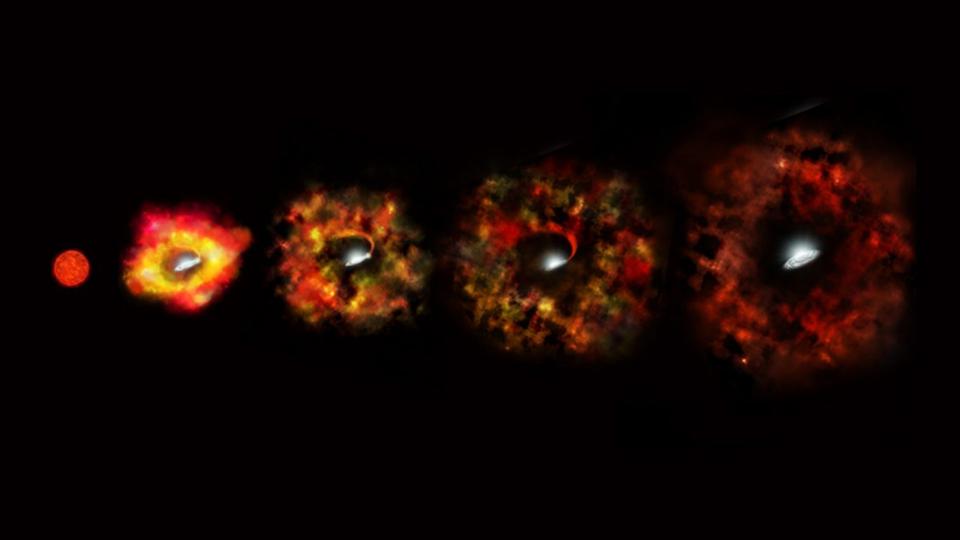
 Credit: NASA/ESA/P. Jeffries (STScI)
Credit: NASA/ESA/P. Jeffries (STScI)
The Collapsing Star
Massive stars begin the end of their lives by collapsing, once their central nuclear fires run out of fuel. Gravity, once opposed and balanced by the outward pressure generated by the star's central thermonuclear powerplant, is now supreme, causing the star to fall in on itself. Sometimes, a miracle occurs, and this inward collapse can be turned into a titanic supernova explosion. Supernovae produce a tremendous shock wave extending for many lightyears around the center of the explosion, visible for centuries as a glowing supernova remnant. Sometimes the remnant of the core of the star is left behind as a superdense neutron star; sometimes, as in the case of SN 1987a, nothing appears to be left behind. Perhaps this means that the stellar core was squeezed to such a degree that nothing can stop the collapse, and the collapse continue forever, forming a region of space called a black hole. But theory also allows for a strange thing: the complete disappearance of a star directly to a black hole without announcing itself by a supernova. It's as if the star suddenly winks out, disappearing from the Universe entirely behind the screen of its event horizon. The illustration above shows the final stages of the direct collapse of a massive star to a black hole, showing how the inner part of the star is swallowed by the newly-formed black hole, while some of the outer part of the star forms a small glowing nebula. As you can imagine, these "failed supernovae" are hard to detect; nevertheless, astronomers have seem to have found what appears to be the formation of a black hole by the direct collapse of a bright massive star. A survey of a huge number of stars in nearby galaxies seems to have caught, for the first time, the sudden disappearance of a bright star in a nearby galaxy into nothingness. The disappeared star was believed to have a mass of 25 times the mass of the Sun, making it one of the most massive of the stars in the galaxy. Do all extremely massive stars end in such a whimper?
Published: September 18, 2017
<
HEA Dictionary ● Archive
● Search HEAPOW
● Other Languages
● HEAPOW on Facebook
● Download all Images
● Education ● HEAD
>

Each week the HEASARC
brings you new, exciting and beautiful images from X-ray and Gamma ray
astronomy. Check back each week and be sure to check out the HEAPOW archive!
Page Author: Dr. Michael F. Corcoran
Last modified Monday, 26-Feb-2024 17:20:55 EST


